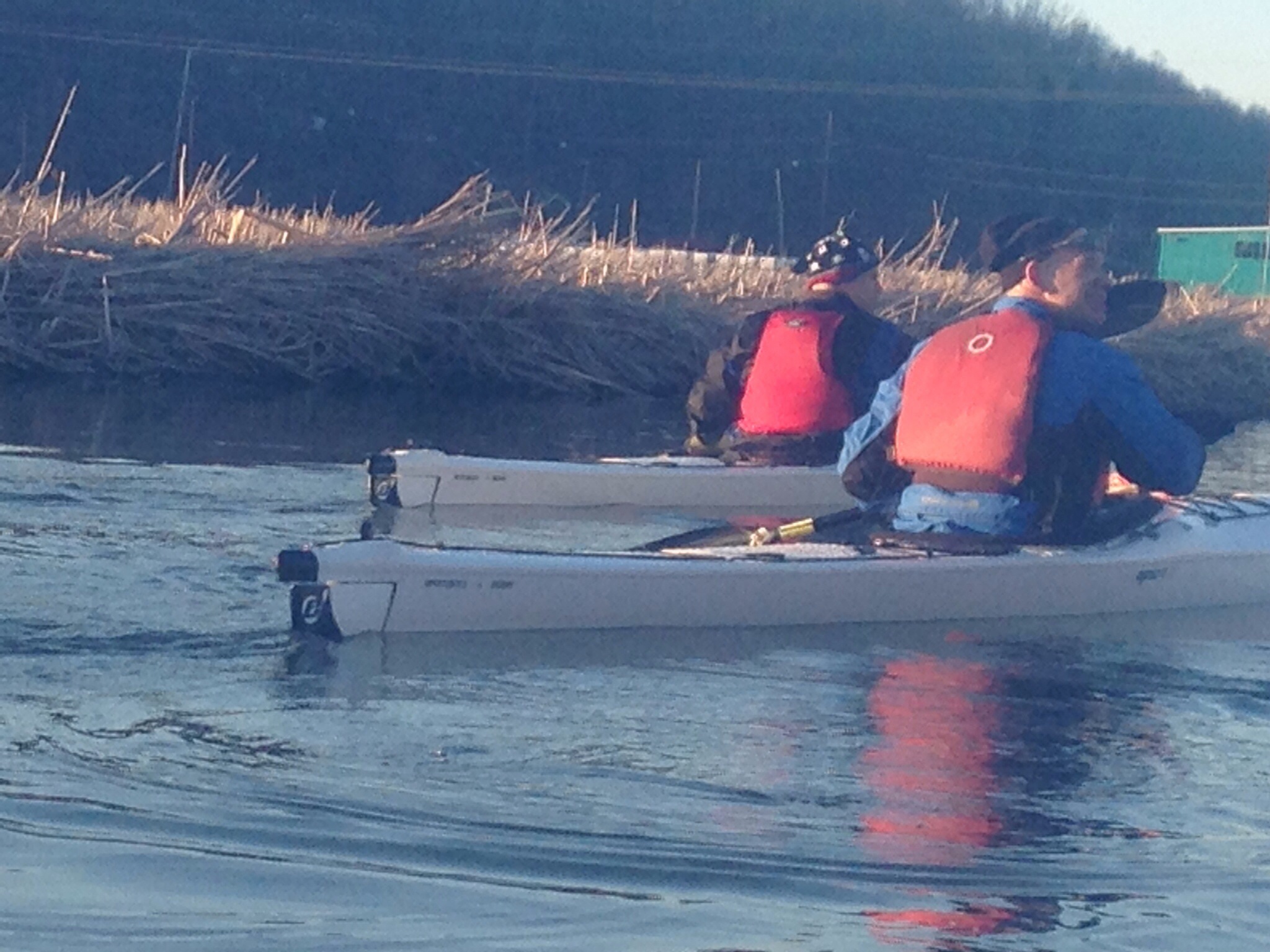
Yesterday Doug and I met at Baycreek for my first paddle of the season. Compared to previous years before my surgeries, this is relatively late for the first paddle, but it’s been a pretty harsh winter. The creek was open and running very strong, and it was 46°F, so it was a perfect first paddle.
Doug and I were both in our West Side Boat Shop boats, him in a Marauder and I in my Thunderbolt, and we still had our race numbers from the Long Lake race last year, which by coincidence were consecutive. Our boats looked like they belonged together. I was dressed in my farmer john wetsuit with long johns underneath, and a NRS Hydroskin light neoprene shirt, OR wind shell, and PFD up top, paddling gloves, and wool cap – all of that worked just fine. Unfortunately on my feet all I had were regular socks under neoprene socks, and that was *not* fine. My feet were cold before I even got in the boat, and when I got out afterwards they were numb and very painful as they thawed out. I’ve got to figure out something better. Somebody suggested plastic bags under the socks, maybe I’ll try that next time.
The strong current on the creek provided some challenge to my boat handling skills. Lots of swirling eddy currents, especially around corners – at one point the current caught my bow and whipped me across the creek right into Doug, which could have been bad for both of us. After that I was careful to go through the big corners single file, and start sweeping on the outside before the current caught me instead of after.
Later that day, I heard Doug telling somebody that I had tired him out and several times he saw me stop paddling to wait for him. In fact, what had happened was I’d powered ahead through a corner or other tricky bit to go through in single file, and I needed that recovery.
It was a pretty good day for spotting wildlife. At one point a mink was running along the bank going the same direction as us. It went into a pile of something and I thought he’d gone to ground, but Doug said “I can see him looking out at us”, and sure enough a few seconds later he pops out again and runs some more along side us, before finding another pile of stuff to hide in. Later on, we saw a diving duck that had a lot of white on the body and a roundish white cheek patch. I originally thought it was a Bufflehead, but I think it was probably a Common Goldeneye. We also saw several Common Mergansers. The Canada Geese were out starting to stake out nest areas.
I didn’t have my GPS, but Doug said we did 2.5 miles up in 45 minutes, and then returned the same 2.5 miles in 20 minutes. My shoulder started twinging a little bit with about a mile to go, so I guess we turned back at about the right time. But I did some stretches afterwards and the pain went down to background levels, so that’s comforting.
Later that evening, we were discussing plans for the season. It looks like Round the Mountain on May 17th is a definite, as is the Long Lake race in September at the end of the season. I doubt I’ll bother with Armond Basset, it’s always a drag. Blackburn is a stretch goal – it’s longer than any race I’ve done, and it’s on the ocean. I’ve also got the “TC Surfski Immersion Weekend” on June 5th-8th, and Oscar Chalupsky is giving a clinic here in town on July 13th. Mostly I think I’d like to spend more time out in the wave on the lake rather than pounding out miles on the canal like I did last year.



